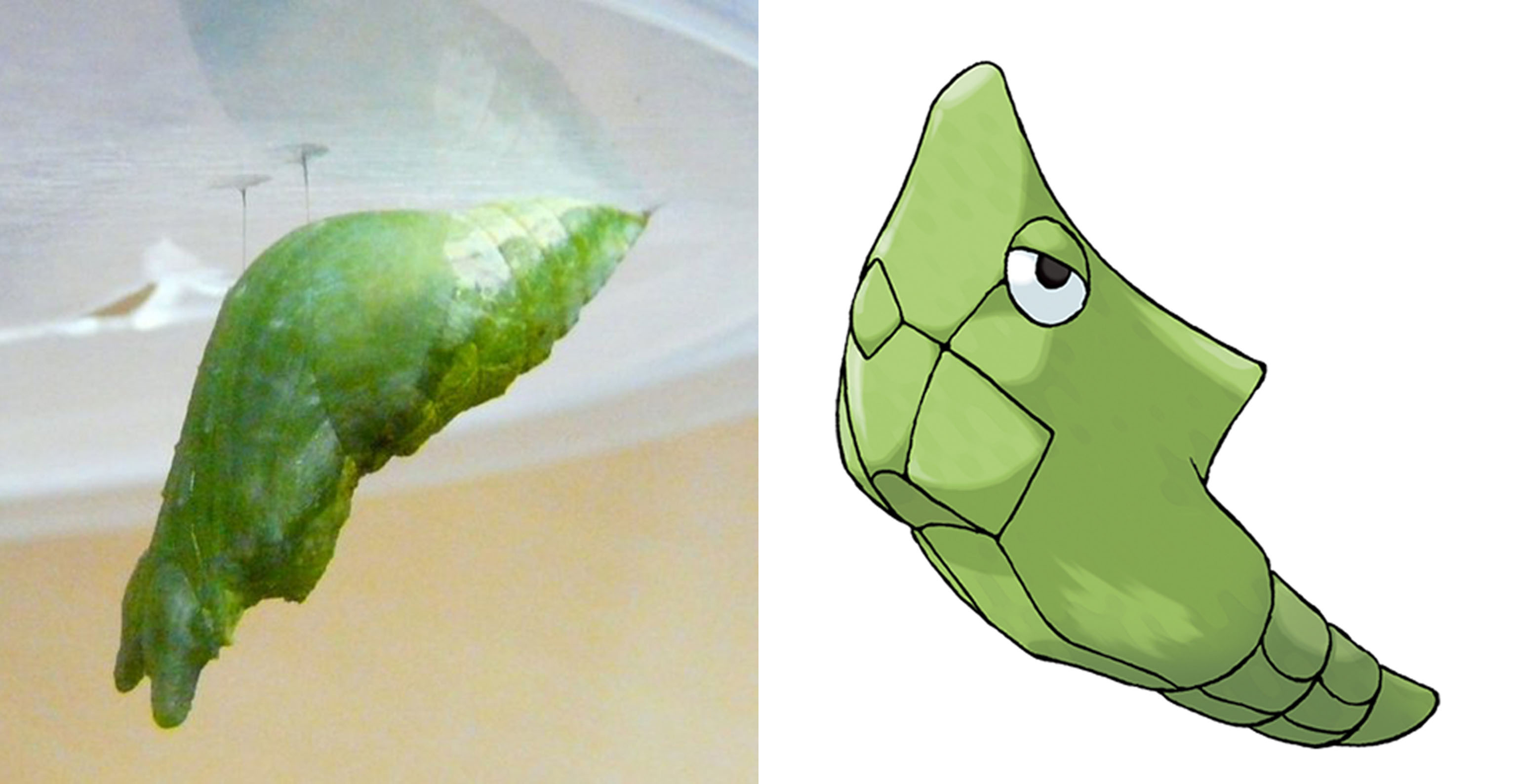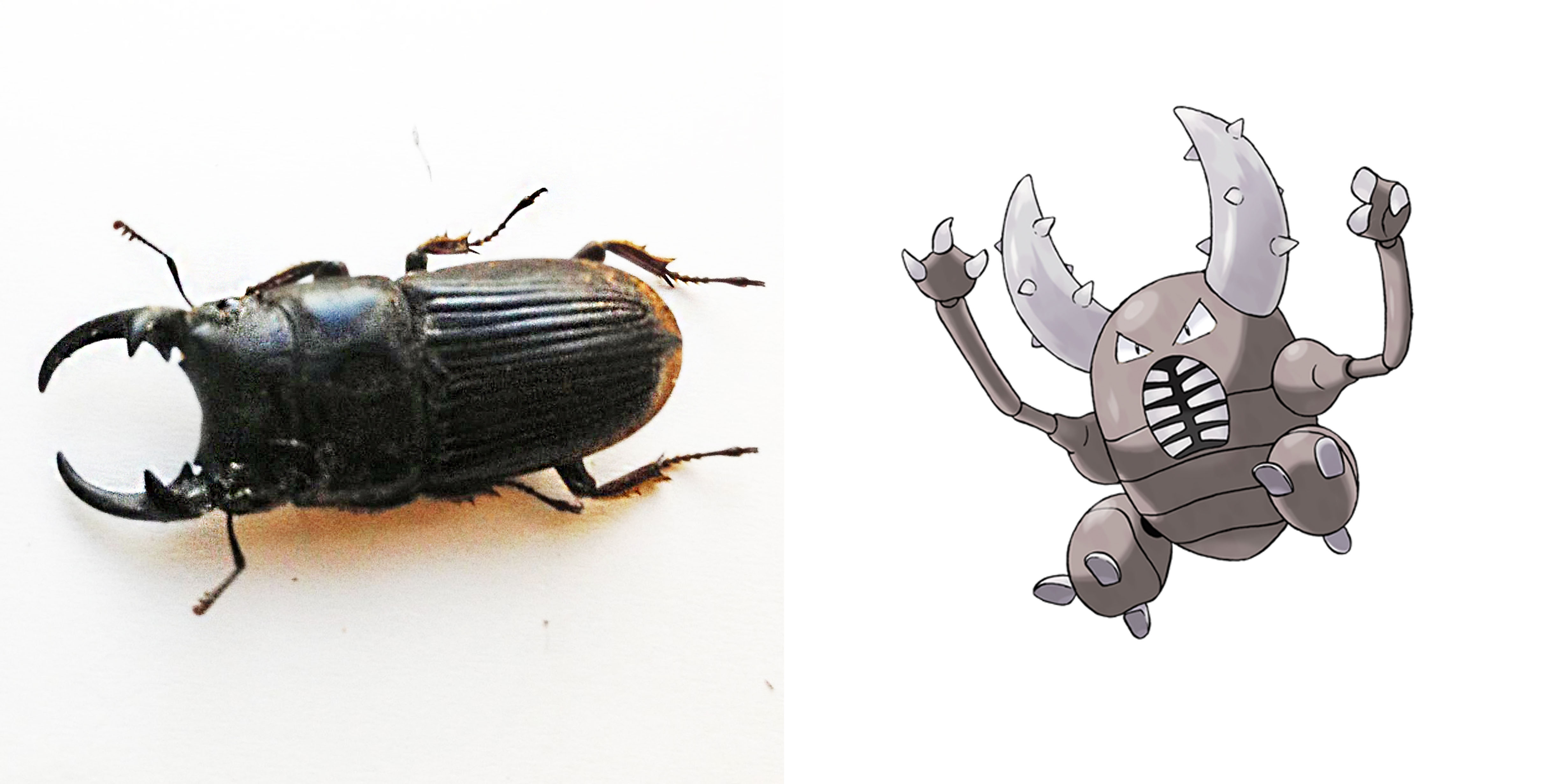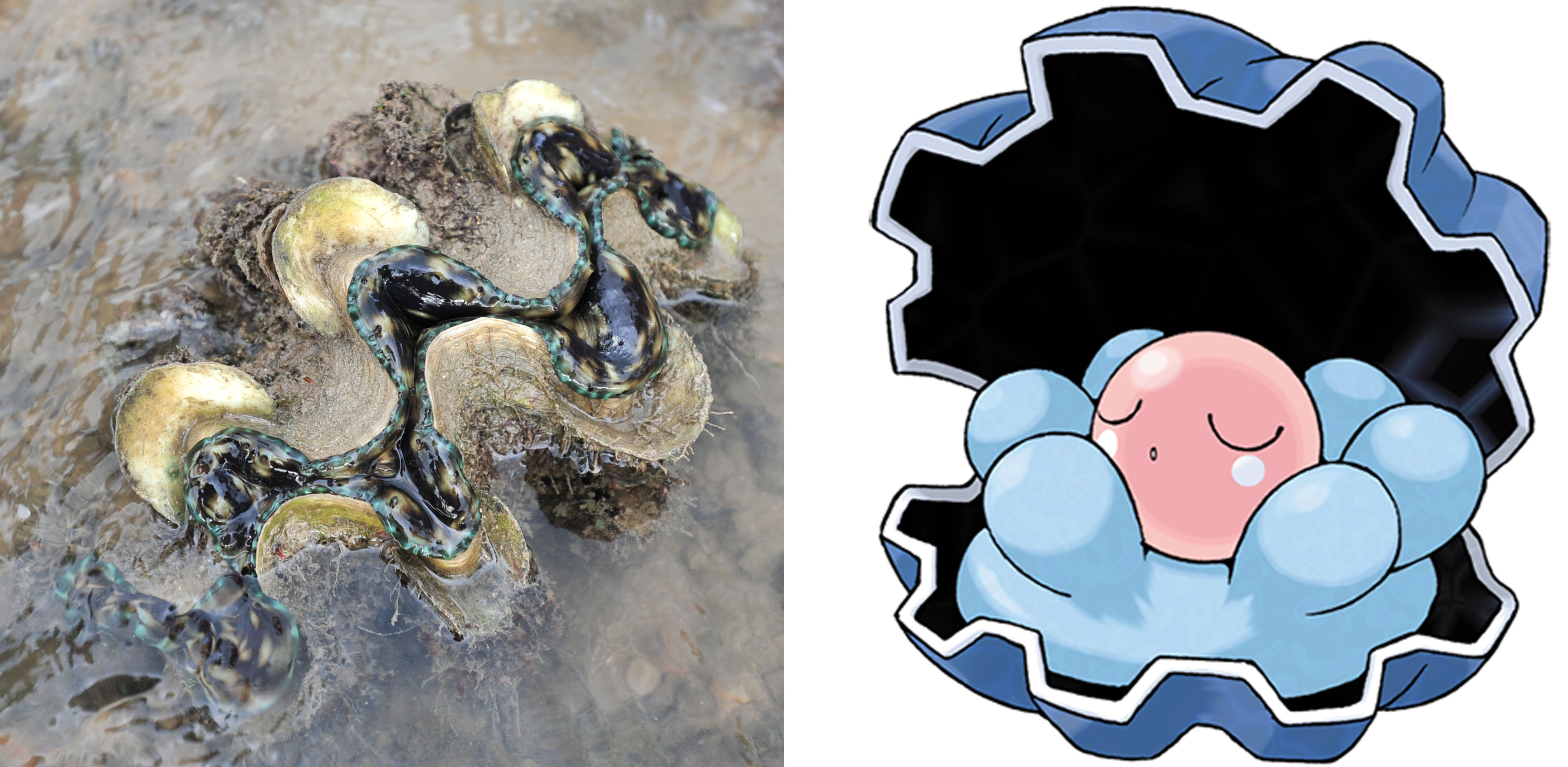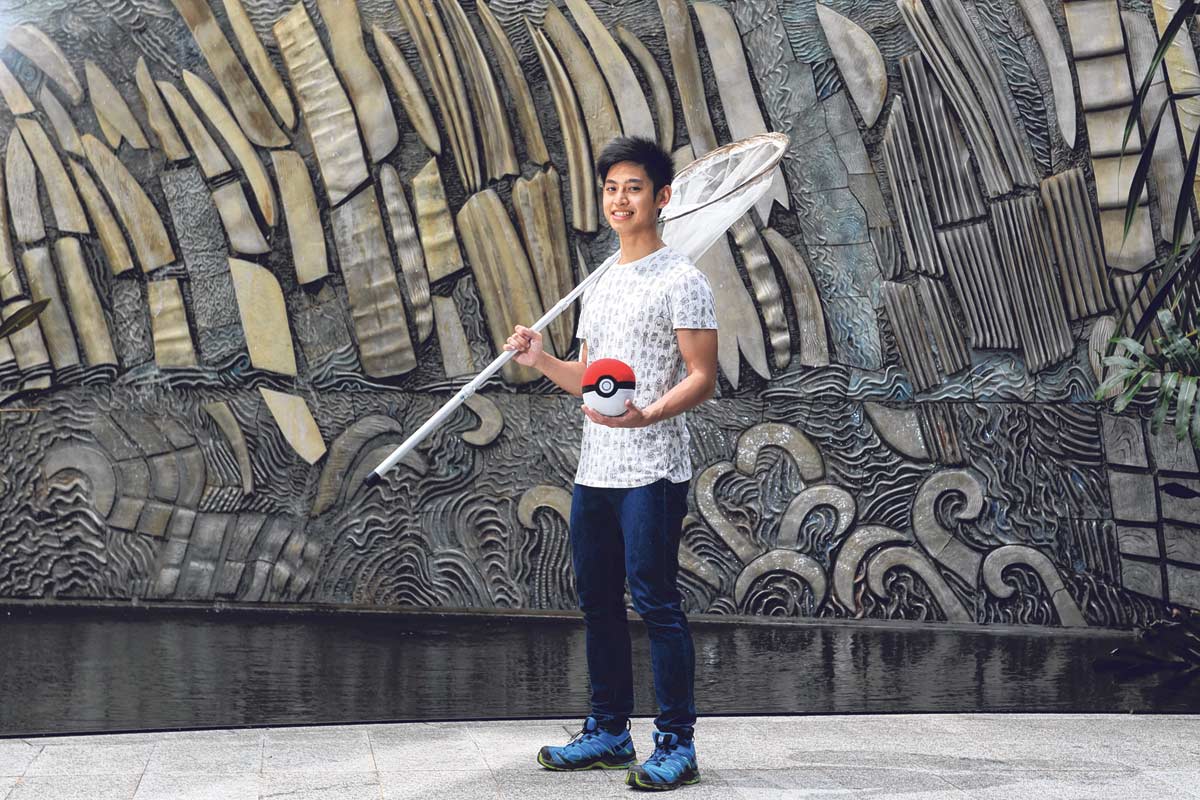Like many Pokemon Go players, National University of Singapore life sciences undergraduate Sean Yap, 24, goes out as often as possible.
But, unlike such gamers whose eyes are glued to their phones in an effort to catch the virtual characters, Mr Yap looks up and around – at plants, birds and, especially, insects.
The insect researcher is now on a mission to get others to do the same and learn to appreciate local biodiversity, and his strategy is to ride on the current popularity of the mobile game.
He has produced a Facebook album – called Real Life Pokemon of Singapore – that shows the similarities between Pokemon characters and native plants and animals.
The water Pokemon Staryu, for example, resembles the knobbly sea stars that dot Singapore’s shores, and the plant Pokemon Victreebel looks like the Raffles pitcher plant.
Mr Yap’s comparisons include a tongue-in-cheek write-up about the native plant or animal.
He says, for instance: “Like Victreebel, pitcher plants are living toilet bowls, complete with a lid and a disgusting rim/seat… Except (they) eat bugs. Some species of pitcher plants even have symbiotic, resistant insects that live in the liquid and feed on the drowned bugs, and the pitchers get the nutrients from their excrement, so they are actually toilet bowls.”
He points out that numerous Pokemon are based on real plants and animals, many of which can be found in Singapore. City dwellers often do not realise this, he says, and he hopes his project will enlighten them and prompt them to look out for these plants and animals.
“If Pokemon Go can be used as a marketing tool for shopping malls to attract customers, then it can probably do the same for science and biodiversity,” Mr Yap said.
Besides raising awareness of Singapore’s native biodiversity, he wants to highlight the plight of wildlife too. For example, in writing about Sandslash, a Pokemon which resembles the critically endangered Sunda pangolin – which is native to Singapore – he says: “Unlike Sandslash, the pangolin’s large claws are not used for combat but for digging into ant or termite nests.
And while Sandslash’s signature move, Defence Curl, may work against predators like tigers (before they went extinct here), humans can just pick them up. “It is humans that make the pangolin such a rare Pokemon worldwide: Poaching is the No. 1 threat to their existence.”
Project manager Adriane Lee, 41, said he never knew that real animals were the inspiration for Pokemon until he saw Mr Yap’s album.
“Sean’s project is a refreshing take on educating a person on local biodiversity, as Pokemon is the latest craze and the game draws audiences normally not knowledgable of or interested in nature to have a more intimate knowledge of the topic,” he said.
Nature groups such as the Herpetological Society of Singapore, which studies reptiles and amphibians, also plan to use Mr Yap’s project at the upcoming Festival of Biodiversity educational fair to be held at the Singapore Botanic Gardens next weekend.
The society’s co-founder Sankar Ananthanarayanan said: “We want to show that Singapore has biodiversity that is pretty cool too, and that appreciating wildlife is just as fun and interesting as playing the game.”
Mr Yap has so far matched about 40 out of the 721 characters in the Pokemon universe with native flora and fauna. He hopes to do so for as many Pokemon as possible.
But unlike the Pokemon Go game in which the aim is to catch them all, he stressed that handling and capturing wild animals in Singapore is illegal.
He cautioned: “Do not try to catch them. Do observe and marvel from a respectful distance. You can join guided walks, many of which are free, for a higher chance of seeing these real-life Pokemon.”
Although he has been a fan of the Pokemon universe since he was a boy, Mr Yap does not play Pokemon Go. In fact, he deleted the app barely four hours after he first downloaded it on the day of its launch.
“I realised I was walking in the forest and constantly checking my phone instead of looking out for wildlife,” he explained.
During a recent visit to Pasir Ris Park for a glimpse of a rare spotted wood owl, Mr Yap said he saw many people who missed the majestic bird because they were busy catching Pokemon.
But getting people out in the open is a first step, he pointed out.
“Some people may not visit the parks in the first place, and completely miss the opportunity to see our native wildlife, but having them outside presents us the opportunity to reach out to them.”
Pokemon creator inspired undergraduate
Undergraduate Sean Yap, 24, is on a mission to raise awareness of local biodiversity by showing how similar Pokemon characters are to native plants and animals.
His inspiration? Pokemon creator Satoshi Tajiri, who in 1990 came up with the idea for the game of collecting virtual monsters based on his childhood interest in insect collecting.
Mr Yap said: “I was inspired by Mr Tajiri, who created Pokemon to share his childhood joy of nature with the new generation of city kids who spent a lot of time indoors.
“A lot of the Pokemon were based on real-world animals and plants, and many of them can be found in Singapore.”
Mr Yap likewise hopes to get others to appreciate local biodiversity by riding on the current popularity of the mobile game. His project, Real Life Pokemon of Singapore, can be found on his Facebook profile.
Mr Tajiri, now 51, grew up in Machida, a suburb in western Tokyo that gradually underwent urbanisaton. “There were rice paddies, rivers, forests. It was full of nature. Then development started taking place and, as it grew, all the insects were driven away,” said Mr Tajiri in an interview with Time magazine back in 1999, when Pokemon mania was sweeping the globe.
Urbanisation meant there were fewer places to catch insects. Mr Tajiri added: “Kids play inside their homes… and a lot had forgotten about catching insects. So had I. When I was making games, something clicked and I decided to make a game with that concept.”
Mr Yap has so far matched about 40 out of the 721 characters in the Pokemon universe with native flora and fauna. He hopes to do so for as many Pokemon as possible.
He points out: “There are certainly more than 700 species of plants and animals in Singapore, and while it is a daunting task, scientists here are trying their best to compile a comprehensive list of local species, complete with images, DNA sequences and other information.”
Native animals and their Pokemon equivalents

COMMON MORMON
Papilio polytes
This butterfly can be found in the forests and urban areas of Singapore, according to butterflycircle.com. Its caterpillar (top) and pupa (above) stages resemble the Pokemons Caterpie (top) and Metapod (above). And just like its virtual avatar, the caterpillar has two red “horns” (actually a fleshy organ called osmeterium) which it can shoot out if it is threatened.

STAG BEETLE (above)
Aegus sp.
The Pokemon Pinsir (above right) looks like a stag beetle, which beetle researcher Sean Yap has seen in Singapore’s nature reserves. There are about 400,000 described beetle species worldwide but, as they are relatively understudied here, a figure is not yet available for Singapore. However, Mr Yap is trying to establish a baseline of local beetles for his final-year project at the National University of Singapore.

SUNDA PANGOLIN (above)
Manis javanica
Like the Pokemon Sandslash (above right), the Sunda pangolin – which is native to Singapore – has formidable claws, but these are not used for battle. Pangolins use their claws to dig for food and create burrows, which aerate the soil in the process. This introduces oxygen and nutrients to the soil and benefits the roots of plants and animals that live underground. While scales are commonly found on reptiles and fish, pangolins are the only mammals in the world that have them. They use their scales as a defence mechanism. When attacked by predators, such as leopards, they curl up into a ball so that the hard keratin envelops all of their soft parts. Unfortunately, this does not protect them from humans, who can simply pick them up.

ASIAN GIANT MANTIS (above)
Hierodula patellifera
This mantis, similar to the Pokemon Scyther (above right), is one of the more common mantids in Asia. Females are larger than males as “they need extra booty space to carry the eggs”, says Mr Yap. In the game, the females have larger abdomens too.

GIANT CLAMS (above)
Tridacna sp.
The Pokemon Clamperl (above right) looks like the giant clam that can be found here. For more about these animals, read researcher Neo Mei Lin’s blog post at www.meilin5giantclam. wordpress.com/factsheet-on- giant-clams/

This article was first published on August 26, 2016.
Get a copy of The Straits Times or go to straitstimes.com for more stories.












































































